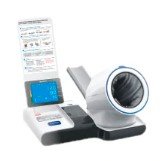Verifying the Reliability of Medical Device Exporters in China for US Medical Labs: Guidelines and Collaborative Efforts
Summary
- Understanding the guidelines for verifying the reliability of medical device exporters in China is crucial for ensuring the quality and safety of medical equipment used in US medical labs and phlebotomy practices.
- The FDA plays a key role in regulating medical devices and ensuring they meet safety and Quality Standards before they can be used in the US.
- Collaboration between US regulatory authorities and Chinese counterparts is essential for monitoring the quality and reliability of medical device exporters in China.
Introduction
Medical laboratories and phlebotomy practices in the United States rely on a wide range of medical devices and equipment to carry out essential Diagnostic Tests and procedures. As the global economy continues to grow, more and more medical device exporters in countries like China are supplying products to the US market. However, ensuring the reliability and quality of these devices is crucial for the safety and accuracy of medical procedures. In this article, we will explore the guidelines for verifying the reliability of medical device exporters in China for use in US medical labs and phlebotomy practices.
Regulation of Medical Devices in the US
The Food and Drug Administration (FDA) is responsible for regulating medical devices in the United States to ensure they meet safety and Quality Standards. Before a medical device can be marketed and used in the US, it must undergo a rigorous evaluation process by the FDA. This process includes assessing the safety and effectiveness of the device, as well as reviewing the manufacturer's Quality Control systems and manufacturing processes.
Classifications of Medical Devices
Medical devices are classified into three categories by the FDA based on the level of risk they pose to patients. Class I devices pose the lowest risk and are subject to general controls, while Class II devices are higher risk and require special controls to ensure their safety and effectiveness. Class III devices, which pose the highest risk, undergo the most rigorous review process by the FDA before they can be marketed and used in the US.
Importance of Quality Control and Compliance
Medical device exporters in China must adhere to strict Regulations and standards to ensure the quality and reliability of their products. It is essential for US medical labs and phlebotomy practices to verify that these exporters comply with international Quality Control standards and meet the requirements set by the FDA. This can help prevent the use of faulty or substandard devices that could jeopardize patient safety and compromise the accuracy of Diagnostic Tests.
Collaboration with Chinese Authorities
Ensuring the reliability of medical device exporters in China requires close collaboration between US regulatory authorities and their Chinese counterparts. The FDA works closely with the China National Medical Products Administration (NMPA) to monitor and evaluate the quality and safety of medical devices exported from China to the US market. This collaboration helps to strengthen regulatory oversight and enforcement mechanisms, ensuring that only high-quality devices are allowed into the US.
Inspections and Audits
The FDA conducts regular inspections and audits of medical device manufacturing facilities in China to assess compliance with Quality Control standards and regulatory requirements. These inspections help to identify any issues or deficiencies in the manufacturing process and enable the FDA to take appropriate action to address them. By working together with Chinese authorities, the FDA can enforce Quality Control standards and ensure the integrity of medical devices exported to the US.
Reporting and Monitoring
Monitoring the performance and reliability of medical devices in US medical labs and phlebotomy practices is essential for ensuring patient safety and quality of care. Healthcare Providers are required to report any incidents or adverse events related to medical devices to the FDA through its MedWatch program. This information helps the FDA to track the performance of medical devices in the field and take action to address any safety concerns or issues that may arise.
Conclusion
Verifying the reliability of medical device exporters in China is essential for ensuring the quality and safety of medical equipment used in US medical labs and phlebotomy practices. By following the guidelines set by the FDA and collaborating with Chinese regulatory authorities, US Healthcare Providers can ensure that they are using high-quality devices that meet international standards. Continuous monitoring and reporting of device performance are crucial for maintaining patient safety and quality of care in medical settings.

Disclaimer: The content provided on this blog is for informational purposes only, reflecting the personal opinions and insights of the author(s) on the topics. The information provided should not be used for diagnosing or treating a health problem or disease, and those seeking personal medical advice should consult with a licensed physician. Always seek the advice of your doctor or other qualified health provider regarding a medical condition. Never disregard professional medical advice or delay in seeking it because of something you have read on this website. If you think you may have a medical emergency, call 911 or go to the nearest emergency room immediately. No physician-patient relationship is created by this web site or its use. No contributors to this web site make any representations, express or implied, with respect to the information provided herein or to its use. While we strive to share accurate and up-to-date information, we cannot guarantee the completeness, reliability, or accuracy of the content. The blog may also include links to external websites and resources for the convenience of our readers. Please note that linking to other sites does not imply endorsement of their content, practices, or services by us. Readers should use their discretion and judgment while exploring any external links and resources mentioned on this blog.
